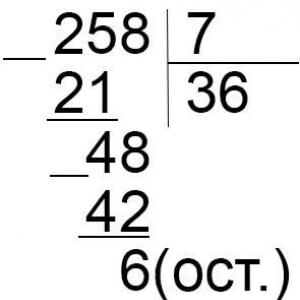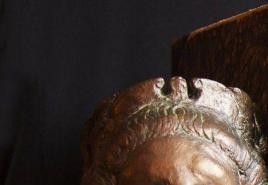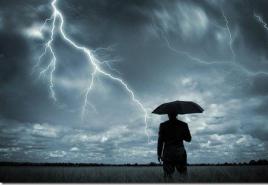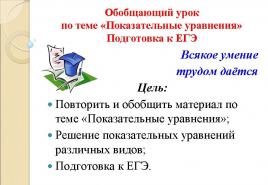Inventive tasks. How to make a liquid boil while cooling a vessel How to make a liquid boil while cooling a vessel
Without a doubt, physics is one of the most interesting sciences. Even the most useless experiments can at the same time be quite exciting. For example, boiling a liquid while cooling it on the one hand seems incredible. After all, to liquid boiled it must be heated, but not cooled, as we used to think. But anything is possible. For such an experiment does not need any special liquid, ordinary water is suitable, you just need to create special conditions.
You will need
- Flask, water, gas burner, tripod.
Instruction manual
Pour ordinary tap water into the flask, fill it approximately half the level. After that, put the flask on the gas burner and heat the water until it boils.
When the water in the flask begins to boil, turn off the heat and wait for the boiling to stop. Seal the flask tightly with a rubber stopper and lock it in the tripod holder by turning it upside down.
Next, start pouring cold water on the bottom of the flask. Better cool vessel, the more visual experience will be. Bubbles will rise to the surface of the water, the water in the flask will boil during cooling. This can be explained by the fact that water vapor is inside vesseland upon cooling, they begin to condense on the walls of the flask. Because of this, the water vapor pressure inside the flask begins to drop. With reduced pressure, the water begins to boil not at a hundred degrees Celsius, but at a lower temperature. Since the water has not completely cooled, and the pressure in vessele has fallen, and therefore boiling occurs during cooling.
note
For this experiment, it is best to use a thermally stable glass flask. When cooling a hot vessel with cold water, ordinary glass may crack from a sharp temperature drop and the experiment will not take place.
Attention, only TODAY!
All interesting
The game of Minecraft is so diverse that you can do alchemy in it. To make a potion and strengthen it, to get a useful experience, even just to transfer water, you need glass vials, or flasks. Make a flask in Minecraft using ...
The hydraulic level is a manual measuring tool designed for marking the horizontal level with high accuracy. In life, home-made hydraulic levels are used, but in the construction and production exact partings are popular. Instruction 1: Hydraulic Level ...
Boiling is a seemingly simple physical process known to everyone who has boiled a kettle at least once in his life. However, it has many features that physicists study in laboratories, and housewives in kitchens. Even the boiling point is far from ...
Boiling water is one of the most common everyday activities. However, in mountainous regions this process has its own peculiarities. At different elevations above sea level, water boils at different temperatures. How does the boiling point of water depend ...
Fir water is a by-product obtained in the manufacturing process of essential oils. But, despite this, it has healing properties and is often used in medicine as anti-inflammatory, wound healing and ...
The burning issue of today is the topic of ecology. Environmental pollution is gaining global proportions. Water becomes hazardous to consume. To remove harmful impurities from the water, you can put a water purification filter. ...
Any liquid poured into a vessel exerts pressure on its walls and bottom. If the liquid is at rest at this time, then hydrostatic pressure can be determined. For its calculation, there is a formula that is valid for correct vessels ...
By the boiling point of a liquid, one can judge its purity. The content of impurities or dissolved substances usually lowers the boiling point. In the laboratory, this parameter can be determined empirically in order to pre-evaluate the benignness ...
Water can be in three basic states of aggregation: liquid, solid and gaseous. Steam, in turn, is unsaturated and saturated - having the same temperature and pressure with boiling water. If the temperature of water vapor at ...
Boiling is a process of vaporization, that is, the transition of a substance from a liquid state to a gaseous state. It differs from evaporation by a much greater speed and rapid flow. Any pure liquid boils at a certain temperature. ...
How and why, by what laws the process of heating water occurs under conditions of gravity, is explained in physics textbooks. But after the first space flights, many are interested in the question of the behavior of this fluid in zero gravity. Is it possible ...
The alcohol used in everyday life is known as ethanol. However, the liquid that results from the alcoholic fermentation process contains ethanol and water. To separate alcohol from water, you can use the distillation process. You will need-…
\u003e\u003e Physics: Dependence of saturated vapor pressure on temperature. Boiling
The liquid does not only evaporate. At a certain temperature, it boils.
Dependence of saturated steam pressure on temperature. The state of saturated steam, as experience shows (we talked about this in the previous section), is approximately described by the equation of state of an ideal gas (10.4), and its pressure is determined by the formula
With increasing temperature, pressure increases. As saturated vapor pressure does not depend on the volume, then, therefore, it depends only on temperature.
However addiction r n.p. from Tfound experimentally is not directly proportional to that of an ideal gas with a constant volume. With increasing temperature, the pressure of real saturated vapor grows faster than the pressure of an ideal gas ( fig. 11.1curve section AB) This becomes apparent if the isochores of the ideal gas are drawn through the points AND and IN (dashed lines). Why is this happening?

When the liquid is heated in a closed vessel, part of the liquid turns into steam. As a result, according to formula (11.1) saturated vapor pressure increases not only due to an increase in liquid temperature, but also due to an increase in the concentration of molecules (density) of the vapor. Basically, an increase in pressure with increasing temperature is determined precisely by an increase in concentration. The main difference in the behavior of an ideal gas and saturated steam is that when the temperature of the steam in the closed vessel (or when the volume changes at a constant temperature), the mass of the steam changes. The liquid is partially converted into steam, or, conversely, the vapor is partially condensed. With an ideal gas, nothing like this happens.
When all the liquid has evaporated, the steam will no longer be saturated with further heating and its pressure at a constant volume will increase in direct proportion to the absolute temperature (see fig. 11.1curve section Sun).
.
As the temperature of the liquid increases, the evaporation rate increases. Finally, the liquid begins to boil. When boiling over the entire volume of liquid, rapidly growing vapor bubbles are formed that float to the surface. The boiling point of the liquid remains constant. This is because all the energy supplied to the liquid is spent on turning it into steam. Under what conditions does a boil begin?
Dissolved gases are always present in the liquid, which are released on the bottom and walls of the vessel, as well as on dust particles suspended in the liquid, which are the centers of vaporization. Vapors of the liquid inside the bubbles are saturated. With increasing temperature, the pressure of saturated vapors increases and the bubbles increase in size. Under the action of buoyancy, they float up. If the upper layers of the liquid have a lower temperature, then condensation of vapor in the bubbles occurs in these layers. The pressure drops rapidly and the bubbles collapse. Slamming occurs so quickly that the walls of the bubble collide and produce something like an explosion. Many of these microexplosions produce characteristic noise. When the liquid warms up enough, the bubbles will stop collapsing and float to the surface. The liquid will boil. Observe the kettle on the stove carefully. You will find that before boiling it almost stops making noise.
The temperature dependence of saturated steam pressure explains why the boiling point of a liquid depends on the pressure on its surface. A vapor bubble can increase when the pressure of saturated steam inside it slightly exceeds the pressure in the liquid, which is the sum of the air pressure on the surface of the liquid (external pressure) and the hydrostatic pressure of the liquid column.
We draw attention to the fact that the evaporation of a liquid occurs at temperatures lower than the boiling point, and only from the surface of the liquid, when boiling, vapor formation occurs throughout the entire volume of the liquid.
Boiling begins at a temperature at which the saturated vapor pressure in the bubbles is compared with the pressure in the liquid.
The greater the external pressure, the higher the boiling point.. So, in a steam boiler at a pressure reaching 1.6 10 6 Pa, water does not boil even at a temperature of 200 ° C. In medical institutions in hermetically sealed vessels - autoclaves ( fig. 11.2) boiling water also occurs at elevated pressure. Therefore, the boiling point of the liquid is much higher than 100 ° C. Autoclaves are used to sterilize surgical instruments, etc.

And vice versa, reducing external pressure, we thereby lower the boiling point. By pumping air and water vapor out of the flask with a pump, you can make the water boil at room temperature ( fig. 11.3) When climbing mountains, atmospheric pressure decreases, so the boiling point decreases. At an altitude of 7134 m (Lenin peak in the Pamirs), the pressure is approximately 4 10 4 Pa \u200b\u200b(300 mmHg). Water boils there at about 70 ° C. It is impossible to cook meat under these conditions.

Each liquid has its own boiling point, which depends on the pressure of its saturated steam. The higher the saturated vapor pressure, the lower the boiling point of the liquid, since at lower temperatures the saturated vapor pressure becomes equal to atmospheric. For example, at a boiling point of 100 ° C, the pressure of saturated water vapor is 101 325 Pa (760 mm Hg), and mercury vapor is only 117 Pa (0.88 mm Hg). Boils mercury at a temperature of 357 ° C under normal pressure.
The liquid boils when the pressure of its saturated vapor becomes equal to the pressure inside the liquid.
???
1. Why does the boiling point increase with pressure?
2. Why is boiling a significant increase in the pressure of saturated vapor in the bubbles, and not an increase in the pressure of the air present in them?
3. How to make a liquid boil while cooling a vessel? (This question is not simple.)
G.Ya. Myakishev, B. B. Bukhovtsev, N. N. Sotsky, Physics grade 10
Lesson content lesson summary support frame lesson presentation acceleration methods interactive technologies Practice tasks and exercises self-examination workshops, trainings, cases, quests homework discussion questions rhetorical questions from students Artwork audio, video clips and multimedia photos, pictures, charts, tables, schemes, humor, jokes, jokes, comics parables, sayings, crosswords, quotes Additions abstracts articles chips for curious cheat sheets textbooks basic and additional glossary of terms other Improving textbooks and lessons correction of errors in the textbook updating a fragment in a textbook elements of innovation in the lesson replacing obsolete knowledge with new For teachers only perfect lessons annual schedule methodological recommendations of the discussion program Integrated lessonsIf you have corrections or suggestions for this lesson,
For most children at school, physics lessons are not of particular interest: the word "physics" is associated with complex tasks and formulas. And the knowledge gained in the lessons is rather difficult to put into practice, and this gives rise to a misunderstanding of the meaning of studying the subject. As an option to solve this problem, as well as with the aim of forming logical thinking and analysis, a set of “inventive tasks” can be proposed. Usually we gave them either at the end of the lesson, or in the "remaining five minutes", or as homework. For example, in the remaining 5-7 minutes of a lesson in the 10th grade, you can manage to solve one or two problems.Since any work should make sense, children's interest can be stimulated by evaluation. If the task was set at home, then for five different solutions to the problem - a rating of "5", for every two additional solutions - another rating of "5". If the task was given in the classroom, then the rating was put to the most active students.
- Cover the vessel 2 . Thus, increase the pressure, and therefore the boiling point of water in it.
- Salt water in a vessel 2 - the boiling point will also increase.
- Boil water in a vessel 2 several times, letting it cool between boiling. Thus, we will remove impurities from the water (they will precipitate), and therefore the centers of vaporization, therefore, we will increase the boiling point of water.
- Place on the bottom of the vessel 2 ultrasonic generator.
- Place a copper rod in the water so that it abuts against the bottoms of both vessels. In this case, we get a heat conductor.
- Wait until the water in the vessel 2 boil away.
- Pour into a vessel 2 liquid boiling at a temperature above 100 ° C.

- Heat the magnet. Thus, we disorient the domains in the magnet.
- Heat the nail. Thus we will disorient domains in
the nail.
- Use a lever made of wood or non-magnetic metal.
- Wrap a wire on a nail and pass a current. Thus, turn the nail into a magnet of the same polarity with the ends of the horseshoe.
- Pull the nail sharply.
- Put the iron rod above the nail. Thus, we will “shorten” the lines of magnetic induction and weaken the magnetic field at the ends of the magnet.
- Tap on the magnet. Deformation will lead to a violation of the ordered orientation of the domains in the magnet.

- Pump air into the flask. As you know, the arch is easy to break if pressed from the inside.
- Place the entire system under the bell by plugging the tube and pumping air out of the bell. Thus, we will create excess pressure in the flask, and it will burst, as in the previous case.
- Pour water into the flask and freeze. The flask will burst, because water expands upon cooling.
- Heat the flask unevenly. Half of the flask is cooled, and the second is heated. The flask will crack due to the difference in thermal expansion.
- Send a sound wave to the flask. The sound will cause the walls of the flask to oscillate, with resonance the bulb will burst.
- Put a few more bricks on top.
- Knock on the brick.

- Wait until the water evaporates.
- Heat the mug than speed up the evaporation.
- Put a spoon in a mug and freeze. Then get a spoon with ice.
Note. Immediately after freezing, it is impossible to get a spoon, so the edges of the mug will need to be heated a little.
- Dip the sponge into the glass.
- Lower the cocktail tube into the mug and suck out the water.
- Lower the end of the long rubber tube into the mug, lower its second end below the surface of the liquid and suck the air out of the tube - water will flow out.
- Put the tube in the mug, the other end of which is placed in the vessel with low pressure. Atmospheric pressure will drive water into another vessel.
- Move the glasses relative to each other, turning one relative to the other.
- wait a while. The system is not completely sealed, and air still enters through the gasket.
- Increase the temperature of the glasses, for example, pour boiling water over them. The gas pressure in the glasses will increase.
- Place the system under the bell and pump out the air. The pressure in the glasses will be greater than outside.
How to divide an ice cube into two equal parts?
- To saw.
- Grind into crumbs and split.
- Cut with a hot knife.
- Drown half.
- Melt the cube, divide the water in half, freeze the resulting halves.
- Put a backup.
- Nail the legs to the floor.
- To select experimentally the angle of inclination so that equilibrium is established. At this angle, cut the legs of the chair to increase the area of \u200b\u200bthe support.
- Cut the recesses in the floor at an angle and insert the legs of the chair into them.
- Glue the chair.
How to make a mathematical matrix swing only in one plane?
- Unscrew the load around its axis. As a result, we get a gyroscope, and, as you know, the plane of rotation of the gyroscope does not change its position in space.
- Make the iron load swing in a magnetic field.
- Build a guide structure (two plates).
- Make a metal load swing in a static electric field (for example, between two charged balls).
- Fine tune at startup.
How to cool bottle water?
- Put the bottle in the refrigerator.
- Put (on) under the ice.
- Wrap the bottle with a damp cloth and place it in the air stream. When water evaporates from the surface of the rag, the latter will cool, taking heat from the water bottle.
- Wrap the bottle with a damp cloth, place under the bell and pump out the air. Thus, we lower the pressure, therefore, we accelerate the evaporation.
- Place the bottle in a vessel with colder water, such as ice.
- Chemically cool.
How to connect two metal plates?
- Use a bolt and nut.
- Use rivets.
- Glue.
- solder.
- Cook. (Not all metals are welded. - Ed.)
- Use spot welding.
- Clean and sand both surfaces to be joined and press them firmly. (So \u200b\u200bcarry out cold welding in space. - Ed.)
How to warm up a metal ball?
- Put in the oven.
- Hit.
- To rub for a long time.
- Deform.
- Pass electric current.
How to speed up the drying of a wet rag?
- Hang on a rope in a dry, warm room.
- Expand it as much as possible.
- Place in a stream of dry air.
- Place between dry rags (newspapers) and change them periodically.
- Sprinkle the rag with dry sand (sawdust), periodically shake and sprinkle again with a new portion of sand. Sand absorbs moisture.
- Place it near a powerful source of high-frequency electromagnetic radiation. As a result of the action of Foucault currents, the liquid will heat up.
How to remove excess stone?
- Chip with a chisel and hammer.
- Erase.
- Preheat the stone and cool sharply. As a result of a sharp temperature difference due to thermal expansion, the stone will crack.
- Cool and heat sharply.
- Cut off.
- To melt.
How to fill a bucket faster in the rain?
- Put a bucket under the drain at the roof of the house. There, water collects from a large roof surface.
- Place a funnel over the bucket.
- Lower the cloth sheet into the bucket with one end, hang the other end. Water will drain from the fabric into the bucket (the area from which the water is collected will increase).
- Place the bucket at an angle of 45 ° to the direction of dropping drops. (It will be worse. - Red.)
- Place several charges of the same name in the center of the bucket. As a result, the path of the droplets will change.
How to raise the water level in the knee of a U-shaped tube relative to another?
- From one knee pump out air and close this knee with a cork.
- In one knee, pump air and close this knee with a cork.
- Pour lighter fluid (e.g. kerosene) into one knee.
- Place a baffle (piston) between the elbows and move it, for example, on a thread.
- Use the phenomenon of osmosis.
How to make a car rolled down a sorting slide to travel a greater distance by inertia?
- push.
- Load the wagon.
- Lubricate the rails with oil, thereby reducing the coefficient of friction.
- Cool the rails. There is always water vapor in the atmosphere, condensation will appear on the chilled rails, which will reduce friction.
How to ensure the presence of water molecules at a height of 1 cm above the surface of the water in the vessel?
- Lower the wick into the water. Water molecules rise through the capillaries.
- Throw ice into water: it floats in water, therefore, you can pick up a piece that will rise 1 cm above the surface, and ice is also water.
- Lower the sponge. Water, as in the case of the wick, rises.
- Heat the water.
- To do nothing. Water evaporates at any temperature, therefore, above the surface, at any or almost any height, there is at least one H 2 O molecule.
How to light a small space?
- Light a match (candle, torch).
- Light a flashlight.
- Ignite an electric discharge.
- Excite luminescence.
- To excite the Cherenkov glow (the glow of water when particles pass through it at a speed higher than the speed of light in water).
How to accelerate the boiling of liquid in a kettle?
- Increase heater power.
- Pour in the kettle not water, but more easily boiling liquid (for example acetone).
- Insulate the kettle, for example, wrap it with a thick cloth and a cotton blanket.
- Place the kettle in the low pressure zone.
- Constantly knock on the teapot, thereby mixing the water.
How to stop the course of a spring watch without damaging its outer shell?
- Do not touch the clock for a long time - they will stop themselves.
- Strongly shake, drop, hit.
- Dip into the liquid and freeze.
- Place in liquid nitrogen.
- Place in an alternating magnetic field.
- Heat up.
How to increase the slipping of shoes on ice?
Answer options
- Wipe off the sole protector completely.
- Make the ice even, smooth.
- Make the surface of the ice moist.
- Pour ice on oil.
- Attach skids to the boots (to make skates).
________________________
4th year student of Vyatka State University, gave this material in 2005 at lessons and extracurricular activities, taking pedagogic at school No. 5 (Slobodskoy, Kirov region, supervisor - honored teacher of the Russian Federation Victor Ivanovich Elkin[email protected]) The students really liked the tasks, they gladly solved them.
Without a doubt, physics is one of the most interesting sciences. Even the most useless experiments can at the same time be quite exciting. For example, boiling a liquid while cooling it on the one hand seems incredible. After all, to liquid boiled it must be heated, but not cooled, as we used to think. But anything is possible. For such an experiment does not need any special liquid, ordinary water is suitable, you just need to create special conditions.
You will need
- Flask, water, gas burner, tripod.
Instruction manual
Pour ordinary tap water into the flask, fill it approximately half the level. After that, put the flask on the gas burner and heat the water until it boils.
When the water in the flask begins to boil, turn off the heat and wait for the boiling to stop. Seal the flask tightly with a rubber stopper and lock it in the tripod holder by turning it upside down.
Next, start pouring cold water on the bottom of the flask. Better cool vessel, the more visual experience will be. Bubbles will rise to the surface of the water, the water in the flask will boil during cooling. This can be explained by the fact that water vapor is inside vesseland upon cooling, they begin to condense on the walls of the flask. Because of this, the water vapor pressure inside the flask begins to drop. With reduced pressure, the water begins to boil not at a hundred degrees Celsius, but at a lower temperature. Since the water has not completely cooled, and the pressure in vessele has fallen, and therefore boiling occurs during cooling.
note
For this experiment, it is best to use a thermally stable glass flask. When cooling a hot vessel with cold water, ordinary glass may crack from a sharp temperature drop and the experiment will not take place.







